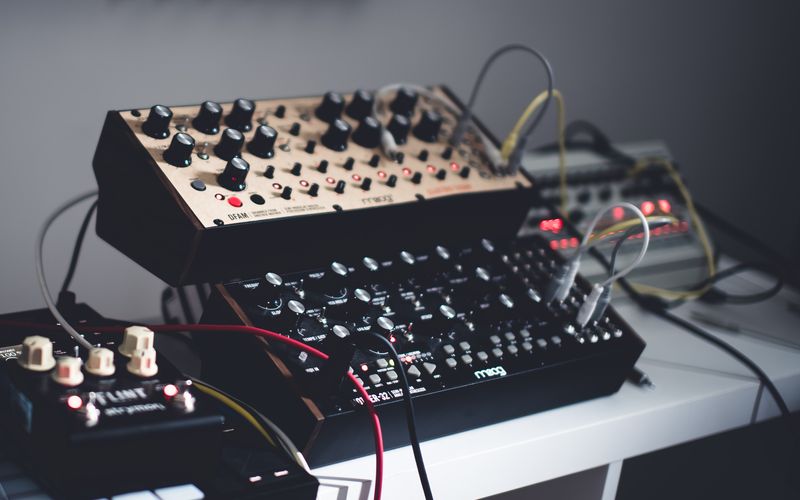An oscillator is an essential component of a synthesizer, as it produces periodic electronic signals necessary for creating sound. Oscillators can be either analog or digital, and each type has its own unique characteristics.
Analog oscillators are electrical circuits that generate repeating electrical signals which can be shaped and filtered to produce sound. They are made up of components such as resistors, capacitors, and transistors, and the frequency of the wave is determined by the values of these components. Analog oscillators are capable of producing a wide range of waveforms, from sine and sawtooth waves to triangle, square and noise waves, and they can be used to create a wide variety of sounds.
One advantage of analog oscillators is that they are capable of producing warm and organic sounds, and they are particularly well-suited for creating synthetic versions of acoustic instruments. A downside of analog oscillators is that they can produce a high degree of background noise, and they can be quite tricky to tune and keep in tune.
Digital oscillators are circuits that use digital processing to generate periodic waveforms, and they are much more accurate and precise than analog oscillators. They can produce a wide range of waveforms, and they are capable of producing waveforms that are not possible with analog oscillators. Digital oscillators are also much easier to control and tune, and they are capable of producing a much cleaner sound with a much lower noise floor.
One advantage of digital oscillators is that they are capable of producing a wide variety of waveforms that can be used to create a wide range of sounds. They are also much easier to control and tune, and they can be used to create complex and interesting sounds. A downside of digital oscillators is that they can produce a more sterile and synthetic sound than analog oscillators, and they can be difficult to work within a live setting.
Both analog and digital oscillators are essential components of a synthesizer, and each has its own unique advantages and disadvantages. Analog oscillators are capable of producing warm and organic sounds, but they can be quite tricky to tune and keep in tune. Digital oscillators are much more accurate and precise, and they are capable of producing waveforms that are not possible with analog oscillators. However, they can produce a more sterile and synthetic sound than analog oscillators. Ultimately, it is up to the musician to decide which type of oscillator best suits their needs.

